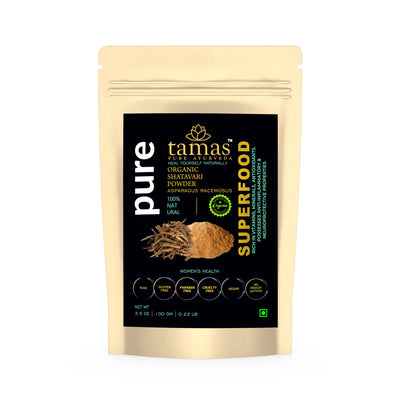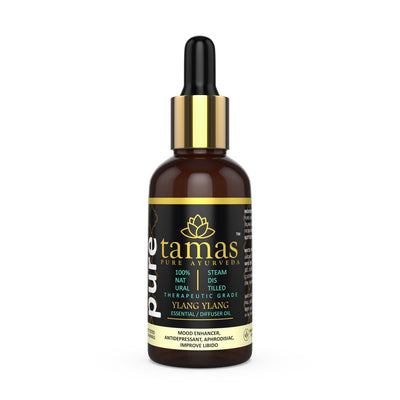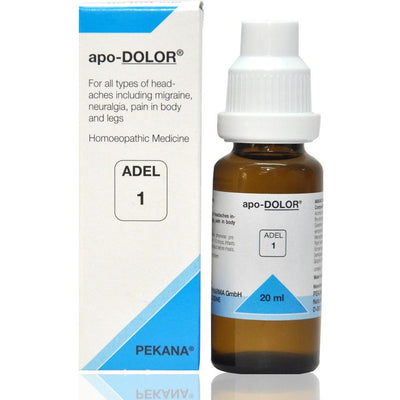
The Dasamoolarishtam is one of the most useful medicines known to help with allergic rhinitis treatment in Ayurveda. It is composed of the Dashamoola ingredients as the primary component. These ten (Dasha) roots (Mool) are the most valuable in Ayurvedic medicine and are known to have excellent anti-inflammatory and analgesic properties.
The Dasamoolarishtam is also a general health tonic that helps overcome the feeling of weakness in the patient. It improves immunity and promotes good health. Dasamoolarishtam is used in Ayurveda for its properties of being a natural analgesic, anti-inflammatory, anti-oxidant, anti-bacterial, anti-stress, adaptogenic, carminative, digestive stimulant, hematogenic, haematinic, anthelmintic and anti-arthritic.
Benefits of DasamoolarishtamDasamoolarishtam benefits include a Vata pacifying ability and help detoxify and strengthen the body. Generally, persistent cough causes severe left flank pain or right flank pain in patients. Dasamoolarishtam is known to help relieve flank pain caused by coughing. As a cardiac stimulant, it is very useful in treating heart diseases. Allergic rhinitis treatment is also an application of this medicine. Dasamoolarishtam uses ingredients that act as a strengthening tonic post-partum.
IngredientsDasamoolam
The star ingredients in the Dasamoolarishtam are the ten very potent roots that are as follows:
-
- Bilva (Aegle marmelos)
- The Bael or Bilva tree
- It balances the three Doshas.
- By balancing the Pitta Dosha it relieves ulcers, inflammations, and Pitta related fevers
-
- This herb has anti-inflammatory and pain relief properties.
- It also has anti-allergic properties which makes it good Ayurvedic medicine for allergic rhinitis
-
- It is used in tonics that help overcome weakness
- It relieves Vata and Pitta dosha imbalances.
-
- It has diuretic and anti-inflammatory properties.
- It balances the three doshas.
- It is useful to help treat blood-related problems.
-
- It has anti-inflammatory and pain-relieving properties.
- It is used to pacify Vata disorders.
-
- This herb is anthelmintic, antioxidant, expectorant, nervine tonic, immunity-stimulating, febrifuge, carminative, anti-catarrhal, diuretic, and anti-diarrheal.
- It balances Vata and Kapha Doshas
- It is used in traditional medicine as an anti-inflammatory, antiemetic and anti-infective
- It is useful in Ayurveda to treat fever, thirst, nausea, dislocation and broken bones
- It balances all the three Doshas
- Ayurveda states that it also encourages the movement of the body fluids
- It is an Ayurvedic anti-inflammatory, detoxifier, anti-oxidant, anti-helminthic, anti-bacterial, anti-hypertensice, and analgesic
- It balances the Kapha and Vata Doshas
- It is especially useful in the Ayurvedic treatment of respiratory issues, chronic respiratory problems, skin problems, colic, bad breath, diarrhea, stress, depression, premature ejaculation, digestive and neurological issues
- Has anti-inflammatory, hepatoprotective, antioxidant, diuretic, and antipyretic properties
- It is used in Ayurvedic medicine for respiratory disorders such as asthma, cough, cold and laryngitis
- Ayurveda states that it is so beneficial for the throat that it can restore a person’s voice to the voice of a lion
- It is also used in the Ayurvedic treatment of fevers, aches, and pains as well as hiccups
- It balances the Kapha and Vata Doshas while increasing the Pitta Dosha
- It supports the digestive fire Agni
- Balances the Vata and Pitta Doshas
- It is useful in Ayurvedic treatments for erectile dysfunction, urinary tract infections, and polycystic ovarian syndrome (PCOS). Ayurveda states that it is a wound healer, anti-inflammatory, promotes ovulation, and helps manage glucose intolerance.
- Ayurvedic diuretic restores the fluid balance in the body and to help break down kidney stones and gall bladder stones
- Boosts energy and vitality
- It is used in the Ayurvedic treatment to enhance bodybuilding, weight loss, anti-obesity, treat urogenital issues and as an aphrodisiac
- It is used in Ayurveda as a rejuvenating agent anti inflammatory, carminative and digestive
- Improves digestive fire Agni
- It balances the Vata and Kapha Doshas
- It is one of the best Ayurvedic remedies for piles
- Is useful in Ayurvedic treatment for heart disease and upper respiratory tract disorders.
- Relieves wounds and is a uterus stimulant.
- It is used as an antiviral, anti-bacterial, antihistamine, bronchodilator, anti-inflammatory, antihelminthic, and in treatment of anaemia.
- It balances Kapha and Vata Doshas
Guduchi (Tinospora cordifolia)
-
It is also called Giloy. The stem is the part of the plant that is used most frequently. The leaves are also used in certain Ayurvedic medicines.
-
This herb is central to many important Ayurvedic medicine formulations
-
It balances all the three Doshas. When there is a Dosha or Dhatu that is at less than optimum levels this herb restores it. When there is an increased level of a Dosha or Dhatu, it brings the level down to normal. So, it is one of the most important herbs to restore the Doshas and Dhatus to normal levels.
-
This herb is used as an adaptogen, analgesic, and anti-infective in Ayurveda
-
It helps the body resist stress and illness.
-
This herb is an excellent detoxifier that helps remove the Ama from the body. This helps to treat the cause of a disease or problem at the root.
-
It is used in traditional medicine for its properties of being an immunomodulator, rejuvenating, anti-inflammatory, digestive, hypoglycemic, anti-constipation, antacid, analgesic, antioxidant, antimutagenic, gastrointestinal protective, detoxifier and hematogenic.
-
It is useful in the treatment of infection, immune deficiency, rheumatoid arthritis, gout, fever, chronic fever, recurrent colds and infections, chronic fatigue and chronic catarrh
-
Since it is an immunomodulator and antipyretic it is very useful in the traditional treatment of infections and fever. It boosts the body’s ability to fight infection
Dasamoolarishtam dosage is: Adults 15 to 25 ml and children 5 to 15 ml or as prescribed by an Ayurvedic physician. Dasamoolarishtam use for self-medication is not advised.
Rhinitis and Ayurveda
As per Ayurveda, the primary cause of rhinitis is the accumulation of Ama.
Ayurveda states that the digestive and metabolic process in the body has to be efficient in order to be healthy. This is dependent on the Agni or digestive fire. When the digestive process is not proper there is an accumulation of a metabolic waste called Ama. When Ama builds up over time it becomes the highly toxic Amavisha that causes a lot of health issues. When it affects the Rasa and Rakhta Dhatus it causes allergic rhinitis.
To avoid Ama buildup we need to ensure that the digestive fire is at its optimum and that the food intake is fresh and unprocessed.
Allergic rhinitis is referred to as Vata-Kaphaja Pratishaya. It is caused by Ama (toxins), Virudh Adhaar, and Asatmya (foreign bodies).
Virudh Adhaar is the wrong intake of the wrong combinations of food. It can also refer to eating the wrong thing at the wrong time of day. Some examples are fish and milk, ice cream at night, etc.
Ayurvedic rhinitis treatment involves the relieving of ama and the balancing of the three Doshas. Medication is given and also supported with other Panchakarma treatments if needed. Dietary recommendations should also be followed.
Lifestyle changes include eating the right foods and being aware of what food one should not eat at night. If there are particular triggers for rhinitis, they should be avoided. Being active, getting plenty of exercise and fresh air is good. One should avoid sleeping in the day and soon after dinner.
Vata type of rhinitis has symptoms of headache and sleeplessness. Pitta type may be accompanied by fever and yellow nasal discharge. Kapha has heavy white mucus and may have a congestion of the sinuses.
Rhinitis - An Overview
Rhinitis is the inflammation of the inner lining of the nose. When it lasts for a shorter time it is called acute rhinitis and long term problems are called chronic rhinitis. Chronic rhinitis is usually allergic in nature. Chronic rhinitis is also hay fever and can be caused by allergens, irritants, pregnancy, medications, and smoking. Patients suffering from asthma and chronic sinusitis also have a tendency to have chronic rhinitis.
Allergic rhinitis is caused when the body has an extreme immune response to an allergen. This does not happen when the person is first exposed to the allergen. It happens when the person gets exposed enough to cause the production of antibodies against it. This is called sensitisation. The histamine that is released by the body to defend against the allergen causes the symptoms. This is why allergic rhinitis medication includes antihistamines.
Common allergens are dust, pollen, spores, animals, and other things such as wood or rubber. Allergens can also be work-related. Having allergic reactions tends to be hereditary or common in children who have been exposed to allergens at a young age. Non-allergic rhinitis is caused when the blood vessels in the nose expand. The symptoms are similar to allergic rhinitis but the occurrence is round the year. This type could be caused by medication, weather, and some kinds of food.




















